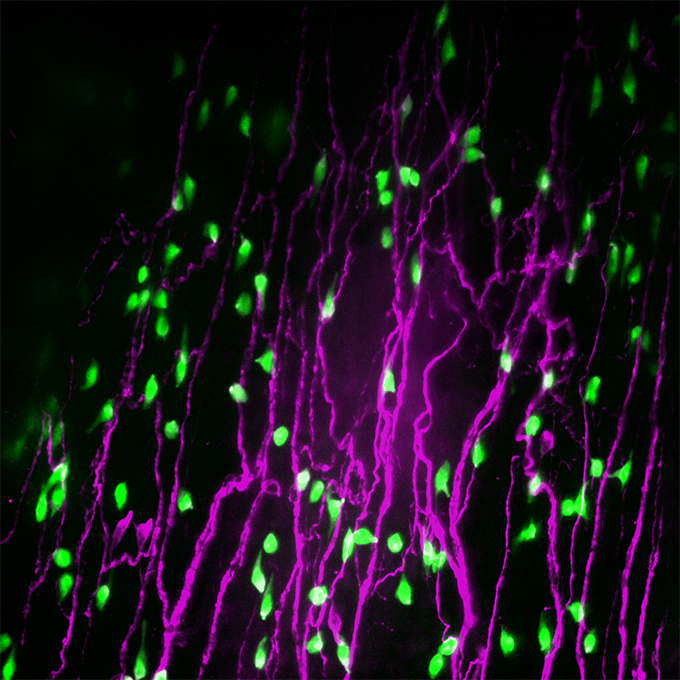calcium: A chemical element and alkali metal common in minerals of the Earth’s crust and in sea salt. It is also found in bone mineral and teeth, and can play a role in the movement of certain substances into and out of cells.
cell: (in biology) The smallest structural and functional unit of an organism. Typically too small to see with the unaided eye, it consists of a watery fluid surrounded by a membrane or wall. Depending on their size, animals are made of anywhere from thousands to trillions of cells. Most organisms, such as yeasts, molds, bacteria and some algae, are composed of only one cell.
hormone: (in zoology and medicine) A chemical produced in a gland and then carried in the bloodstream to another part of the body. Hormones control many important body activities, such as growth. Hormones act by triggering or regulating chemical reactions in the body. (in botany) A chemical that serves as a signaling compound that tells cells of a plant when and how to develop, or when to grow old and die.
information: (as opposed to data) Facts provided or trends learned about something or someone, often as a result of studying data.
nervous system: The network of nerve cells and fibers that transmits signals between parts of the body.
physiologist: A scientist who studies the branch of biology that deals with how the bodies of healthy organisms function under normal circumstances.
sensor: A device that picks up information on physical or chemical conditions — such as temperature, barometric pressure, salinity, humidity, pH, light intensity or radiation — and stores or broadcasts that information. Scientists and engineers often rely on sensors to inform them of conditions that may change over time or that exist far from where a researcher can measure them directly. (in biology) The structure that an organism uses to sense attributes of its environment, such as heat, winds, chemicals, moisture, trauma or an attack by predators.
system: A network of parts that together work to achieve some function. For instance, the blood, vessels and heart are primary components of the human body's circulatory system. Similarly, trains, platforms, tracks, roadway signals and overpasses are among the potential components of a nation's railway system. System can even be applied to the processes or ideas that are part of some method or ordered set of procedures for getting a task done.
taste: One of the basic properties the body uses to sense its environment, especially foods, using receptors (taste buds) on the tongue (and some other organs).
taste buds: A collection of 50 to 100 or so taste receptors. They’re found on the tongues of land animals. When certain chemicals in food or other materials trigger a response in these receptors, the brain detects one or more of five types of tastes —sweet, sour, salty, bitter or umami.A collection of 50 to 100 or so taste receptors. They’re found on the tongues of land animals. When certain chemicals in food or other materials trigger a response in these receptors, the brain detects one or more flavors — sweet, sour, salty, bitter or umami.
trachea: A tube-like structure that carries air from the throat into the lungs of vertebrate animals. Rings of cartilage reinforce this structure in mammals, creating what’s known as a windpipe.









